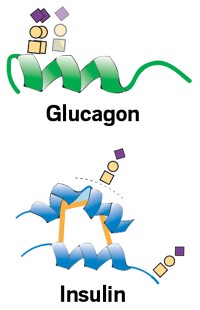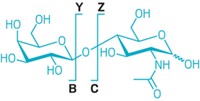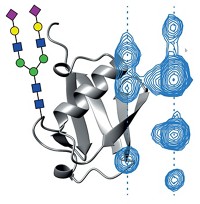Advertisement
Grab your lab coat. Let's get started
Welcome!
Welcome!
Create an account below to get 6 C&EN articles per month, receive newsletters and more - all free.
It seems this is your first time logging in online. Please enter the following information to continue.
As an ACS member you automatically get access to this site. All we need is few more details to create your reading experience.
Not you? Sign in with a different account.
Not you? Sign in with a different account.
ERROR 1
ERROR 1
ERROR 2
ERROR 2
ERROR 2
ERROR 2
ERROR 2
Password and Confirm password must match.
If you have an ACS member number, please enter it here so we can link this account to your membership. (optional)
ERROR 2
ACS values your privacy. By submitting your information, you are gaining access to C&EN and subscribing to our weekly newsletter. We use the information you provide to make your reading experience better, and we will never sell your data to third party members.
Proteomics
Mass spec analysis of plasma shows that individuals have unique but simple antibody profiles
Only a few dozen antibodies dominate in each profile
by Celia Henry Arnaud
September 28, 2021

The human immune system is thought to have the capacity to make billions of different antibodies. Despite the vast potential for variations, the set of antibodies circulating at any given time is actually quite simple, a new study reports (Cell Syst. 2021, DOI: 10.1016/j.cels.2021.08.008).
Albert J. R. Heck of the University of Utrecht and coworkers used mass spectrometry to monitor individual profiles of the antigen-binding fragments (Fabs) from immunoglobulin G1 (IgG1) antibodies circulating in human plasma. Antibodies are proteins produced by the immune system to recognize and neutralize invaders such as bacteria and viruses. IgG antibodies represent about 75% of the serum antibodies in humans and are associated with the so-called adaptive immune response, which is tailored to specific pathogens encountered; IgG1 is the most abundant subclass. The researchers measured the mass and chromatographic retention times of Fabs from samples collected at multiple time points from 2 healthy individuals and 8 individuals who developed sepsis following surgery. In each sample, the 30 most abundant IgG1 antibodies accounted for more than two-thirds of all IgG1 proteins in the blood. There was minimal overlap in the antibody profiles of different individuals.
“If you compared the repertoire of one healthy person with another healthy person, there was zero overlap,” Heck says. “If you compared the repertoire of that person at time point zero and three months thereafter, the overlap was like 95% or so.” That finding suggests that in the absence of challenges, such as infections or vaccinations, an individual’s antibody repertoire is relatively stable, Heck says. For individuals with sepsis, their antibody repertoires were also unique, but new antibodies appeared in response to the sepsis. Thus, their repertoire changed more over time. The findings do not imply that we only have a limited number of antibodies available to fight threats. Immune cells are standing by to produce other antibodies if they are needed.
In addition to monitoring antibody profiles, the researchers sequenced an antibody that appeared after sepsis. Sequencing antibodies is particularly difficult, Heck says, because the amino acid sequences are about 90% identical, but the variability in the antigen-recognizing regions can be great. “For mass spec sequencing, most of the sequencing only gives you information about the constant regions, and you have to get information about the variable regions,” he says. The researchers combined data from two proteomics methods to pin down the exact sequence.
“Because all antibodies are very similar in terms of size and chemical composition they cannot be easily resolved experimentally,” says George Georgiou, who studies protein therapeutics and adaptive immune responses at the University of Texas at Austin. The new work from Heck and coworkers represents a “relatively simple method for resolving the most abundant antibody species in circulation, which potentially can aid in the understanding of human immunity,” Georgiou says.
“The authors supposition that two-thirds of the human IgG1 repertoire is composed of 30 different clones is a complete shift in my thinking,” says David L. Murray, who studies antibodies at the Mayo Clinic. “If this work holds up with other studies, it makes the challenge of understanding the nature of antibodies a much less daunting proposition. There is a vast difference in understanding 30 IgG clones than understanding millions of clones.”
Heck’s team is working on extending the approach to antibody classes other than IgG1. They are also studying antibody profiles in human milk, cerebral spinal fluid, and serum following vaccination.





Join the conversation
Contact the reporter
Submit a Letter to the Editor for publication
Engage with us on Twitter